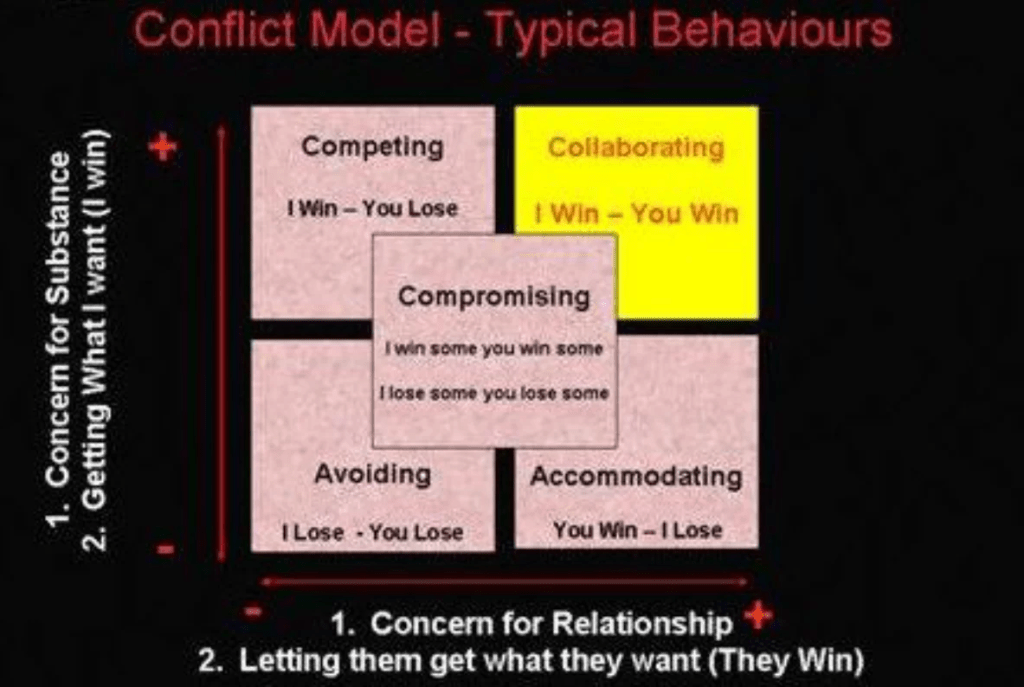The Art and Science of Negotiation

Introduction
Negotiation is a process of communication between two or more parties to reach an agreement on a common objective. It is a way to resolve conflicts, come to a mutually acceptable solution, or achieve a specific goal. Negotiation skills are essential in personal and professional life, as people often face situations where they need to persuade or convince others to their point of view. Let us study and understand the art and science of negotiation.
Nature and Concept of Negotiation
Negotiation is a dynamic process that involves both competition and cooperation. The parties involved in a negotiation have their interests, needs, and goals. Negotiation involves bargaining, where the parties make offers, counteroffers, and concessions to reach an agreement. The negotiation process involves finding a solution that satisfies the interests of both parties.
The Negotiation Process
The negotiation process involves a systematic sequence of activities that are listed and described below.
Preparation – The parties involved in the negotiation prepare by gathering information about each other’s interests, needs, and goals. They also identify possible solutions and alternatives.
Opening Session – The opening session is the first face-to-face meeting between the parties. The parties introduce themselves, define the issues to be negotiated, and establish ground rules for the negotiation.
Bargaining – The bargaining stage is where the parties make offers, counteroffers, and concessions. The bargaining process involves finding common ground, exploring alternatives, and making compromises.
Settlement – The settlement stage is when the parties reach an agreement. The agreement may be in the form of a contract, memorandum of understanding, or verbal agreement.
Negotiation Styles

There are five different negotiation styles. there is no single ‘best’ or ‘right’ approach. All five profiles of dealing with conflict are useful in different situations. Although we’re capable of using all five, most of us tend to have one or two preferred negotiation conflict styles that we use unconsciously in most conflict situations. Why? Either because our preferred styles have worked for us in the past, or because of our temperament (nature) or because of our upbringing (nurture). Here are the five different styles of negotiation.
- Compete
- Accommodate
- Avoid
- Compromise
- Collaborate
Negotiation Styles – Compete
- Competitive style negotiators pursue their own needs – yes, even when this means others suffer.
- They usually don’t want to cause others to suffer and lose, they are just so narrowly focused on their short-term gains that they plunder obliviously through negotiations like a pirate.
- They often use whatever power and tactics they can muster, including their personality, position, economic threats, brand strength or size or market share.
- At its extreme negotiators call their behavior aggressive or psychotic.
Negotiation Styles – Accommodate
- The opposite of competing. For accommodating style negotiators, the relationship is everything.
- Accommodating profiles think that the route to winning people over is to give them what they want.
- They don’t just give products and services; they are generous with information too.
- Accommodators are usually very well liked by their colleagues and opposite party negotiators
Negotiation Styles – Avoid
- This is most often referred to as “passive aggressive”.
- People who habitually use this style really dislike conflict. Rather than talk directly with you about the issue, avoid styles may instead try to take revenge without you knowing about it.
- The avoid style can be a typical reaction to high compete negotiators.
- Sellers will frequently call less often on high compete buyers (i.e. Avoiding Competitive buyers) – and may choose to invest marketing money and share their best ideas and prize promotions with non-avoid profiles.
Negotiation Styles – Compromise
- Compromising is the style that most people think of as negotiation, but in reality, compromising is usually just haggling.
- Compromising often involves splitting the difference, usually resulting in an end position of about halfway between both party’s opening positions.
- In the absence of a good rationale or properly exchanged concessions, halfway between the two positions seems “fair”.
- What compromising ignores however, is that the people that take the most extreme positions tend to get more of what is on offer.
Negotiation Styles – Collaborate
- Collaboration is about making sure both parties have their needs met, and as much mutual value as can be created is created.
- “Win/Win” negotiators usually evolve through the other profiles, they grow into a collaborative negotiation style.
- This means collaborative profile negotiators can more easily revert to one or two of the other styles when pushed or when the situation calls for it.
- Collaborative profile negotiators are adamant that their needs must be met – and they acknowledge that the other party has needs that must be met too.
Negotiation Techniques
Before entering a negotiation, planning is essential. The person with the right mindset is more in control and will achieve the better outcome. These eight techniques will help you and your business achieve successful negotiations.
- Planning
- Best Alternative to Negotiated Agreement
- Walk Away
- Emotions
- Listen
- Overconfidence
- Anchor
- Think of Non-traditional Solutions
Negotiation Techniques – Planning
- The first step to a favorable negotiation outcome is defining the optimal goal a person wishes to achieve in that negotiation.
- If negotiating for the price of a car, you need to walk in with a comparable price of a vehicle that another dealership is selling it for. Or you may want to plan for a certain price you are willing to spend so you have a baseline on how high of a price you are willing to pay during the transaction.
- Preparation is key to success in negotiation, and it is important to give advanced thought to the objective factors involved such as: who are the parties involved? And, what are the issues?
Negotiation Techniques – BATNA
- Best Alternative to Negotiated Agreement (BATNA) is used by negotiators to describe the best option available if their desired end goal is not reached.
- During negotiation, often times neither side gets what they want.
- The side that has the next best alternative comes out feeling the most satisfied.
- Negotiators that have a strong, well defined BATNA have an advantage because they have a clear benchmark to which they can compare any negotiated settlement.
- They think about all the alternatives available to both parties if the current negotiations ends.
Negotiation Techniques – Walk Away
- Determine your walk away point before the negotiation starts. This is not a decision to be considered later in the heat of negotiation.
- If you don’t establish the walk away point before negotiation begins, you might convince yourself into accepting lousy terms just for the sake of making the deal.
- It is acceptable to take a short-term break from the table, walk into another area and organize your thoughts.
- If you are in a group negotiation, it might be to your benefit to step away from the table, get organized, summarize your thoughts and then re-enter the negotiation space.
- Know your walk away point and stick with it.
Negotiation Techniques – Emotions
- Negotiations can be, and usually are, packed with emotions.
- They often collapse when one party becomes angry with the other and attempts to maximize the opponent’s displeasure rather than his own satisfaction.
- Emotions affect your perceptions of what is fair in a negotiation and influence your decision-making and following behavior.
Emotional Strategy
It is vitally important to prepare your emotional strategy on stages of the negotiation. Because a shift from facts to emotions might happen:
- Don’t share or respond to the other party’s emotional outburst. You won’t appear weak when you do not respond to anger with anger, you appear more in control.
- Don’t take an emotional outburst personally. Attributing an emotional outburst to something you did will only make you defensive and distract you from your strategy.
- Consider putting the party’s behavior on the table. Tell the other party that their emotion is interfering with the negotiation.
- Try apologizing for the other party’s emotional state, “I am very sorry you are so upset.”
- Take a break from the negotiation, it might be good for both parties. • Building rapport before, during, and after negotiation can reduce the odds that the other party will become angry.
- If you seek to frame the negotiation cooperatively, you make it clear that you’re seeking a win-win solution.
- Just as you prepare strategic moves before negotiation, you should invest effort in preparing your emotional approach.
Negotiation Techniques – Listen
- Listening is much more than just hearing. Listening is not only done to the story, but how it is told, the use of language and voice, and how the other person uses his or her body.
- Silence can be used to your advantage. It is important to not interrupt when your counterpart is speaking. Interrupting a speaker is not good business for two reasons. First it is very rude. Second, you may be cutting off valuable information that will help you at a later point in the negotiation. Even if they are saying something inaccurate let them finish, you could obtain valuable information to serve you later for the next question.
- Lastly, it is important to be aware of non-verbal messages. Non-verbal messages allow people to reinforce what is said in words. For example, nodding your head vigorously when saying “yes” or “I agree,” but a shrug of the shoulders or a sad expression when saying “I am fine,” may imply that things are not good. Signs of an active listener that are non-verbal might include a smile, eye contact, posture and mirroring.
- However, these signs may not be appropriate in all situations across all cultures. Some research estimates that speech only makes up about 20% to 30% of communication, the rest being non-verbal communication.
Negotiation Techniques – Over Confidence
- Failing to collect key factual information because you are so sure of your assumptions and opinions will not play out to your advantage. When the stakes are high, you must overcome the common tendency to spend time looking in the mirror.
- Negotiators get into trouble when they lack information about the other players in the game. Over confidence may come across as cocky or arrogant and some negotiators may choose a more expensive outcome rather than dealing with an overconfident negotiator.
- To reduce over confidence, find a devil’s advocate within your organization to question your approach and assumptions. If you’re the boss, this technique may be awkward; your subordinates may feel intimidated telling you what you can improve on. If you want to pick the right negotiation strategy you will have to persuade other members of your organization to give you honest feedback, not the information they think you want to hear.
- Finally, always do appropriate research and anticipate relevant questions and arguments from the opposing party.
Negotiation Techniques – Anchors
- Anchoring is making an effort to establish a reference point, or an anchor, around which a negotiation will revolve. This anchor becomes the starting point which adjustments are made. In negotiation, potential anchors are everywhere. They can be as simple as a list price for a home, as complex as some algorithms, and even sometimes just random numbers.
- To use anchoring to your advantage, you must decide what initial offer will attract the attention of the other party. The offer can’t be so extreme that the other party doesn’t even consider negotiating further with you. You want your offer to be attractive enough to your opponent to serve as an anchor for ensuing offers. Even when people know that a particular anchor should not influence their judgments, they are often incapable of resisting its influence. As a result, they insufficiently adjust their valuations away from the anchor.
- When buying a car, don’t automatically believe that the list price is close to the value you should pay. The best way to not be fooled by anchors, is to educate yourself.
Negotiation Techniques – Non-Traditional Solutions
- The attitude of negotiation and problem solving is to find the the common ground. Once a person is able to find the common ground, the issue is resolved. It is difficult at times. However, to reach a solution, the first step is to believe that there is a solution. If we think that there is no solution, we won’t be able to reach any.
- Whether we like it or not, negotiation is constantly around us. Businesses selling goods or services to the government will need to negotiate a contract.
Interesting Read – 3 Golden Steps That Make Freshers Get Hired Instantly
Thompson Pyramid Model of Negotiation
In The Mind and Heart of the Negotiator (2005), author Leigh Thompson describes three levels of success in negotiations and presents them in the form of a pyramid. Each level represents a higher degree of achievement and success in the negotiation process, with the ultimate goal being to reach the top of the pyramid.
Level 1 Agreement: Exceeds both parties’ reservation points or BATNA. For e.g. 50-50 profit sharing in a joint venture.
Level 2 Agreement: Creates additional value for both the parties. For e.g. Taking away 40-40 profits and reinvesting 20 profits in brand building to generate more profits every year.
Level 3 Agreement: Creates superior and maximum value for both the participants. For e.g. Offering 30 day interest free payment window by supplier to customer. The customer uses this window to offer multiple payment options to its own customers thus attracting more customers, bringing more business to the original supplier.

Bargaining
Bargaining is a process of negotiation between two or more parties with the goal of reaching a mutually acceptable agreement. It involves a discussion between the parties where they make offers and counteroffers, with the ultimate aim of settling on terms that satisfy all parties.
Bargaining can take place in a variety of settings, such as in business negotiations, labor union negotiations, or even in personal interactions. In any case, it involves the parties attempting to find a middle ground where both parties feel they have gained something from the negotiation.
Effective bargaining requires good communication skills, the ability to listen and understand the other party’s perspective, and the willingness to compromise. It is a critical skill in many areas of life, from business to personal relationships, and can help individuals and organizations achieve their goals while maintaining positive relationships with others.
Types of Bargaining
- Distributive
- Integrative
Types of Bargaining – Distributive
- Distributive bargaining is a competitive approach to negotiation, where the parties try to maximize their gains at the expense of the other party.
- In distributive bargaining, there is a fixed pie, and the parties compete for the largest share. The goal of distributive bargaining is to get as much as possible for oneself.
Types of Bargaining – Integrative
- Integrative bargaining is a collaborative approach to negotiation, where the parties work together to create value and find a win-win solution.
- In integrative bargaining, the parties expand the pie by creating more options and alternatives. The goal of integrative bargaining is to create a mutually beneficial outcome for both parties.
Also Read – Introduction To Conflict, Types & Sources, And Resolution Strategies
Conclusion
Negotiation is an essential skill that people need to learn to achieve success in personal and professional life. Negotiation involves a dynamic process of communication, bargaining, and compromise. There are two types of bargaining: distributive bargaining and integrative bargaining. Both types of bargaining have their advantages and disadvantages, and the approach used depends on the situation and the parties involved. Effective negotiation skills can lead to successful outcomes and help build strong relationships between parties.








